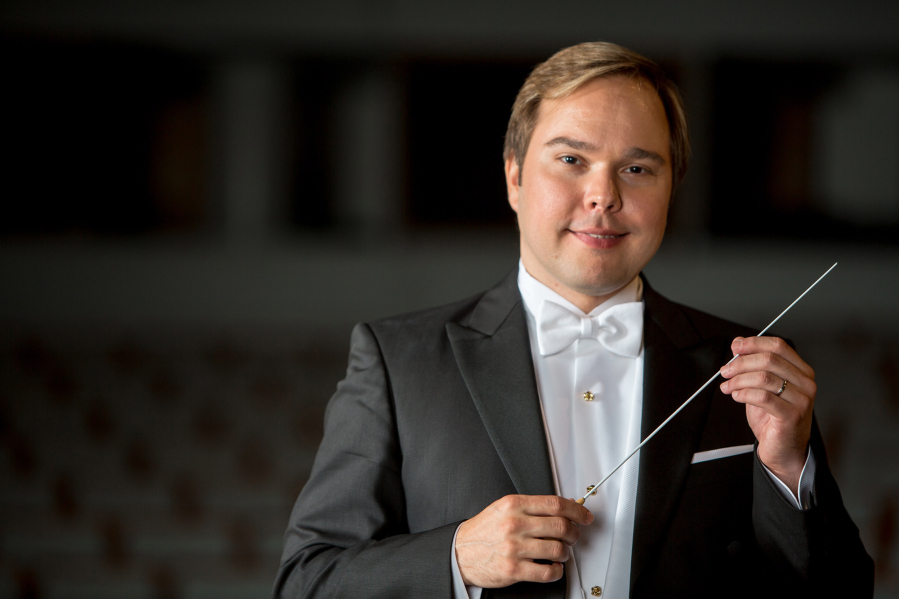When it comes to standard repertory in classical music, there’s nothing like going to the Three Bs — Bach, Beethoven and Brahms — for some of the greatest works ever written. This weekend, the Vancouver Symphony, under guest conductor Marcelo Lehninger, will perform a few of their most famous works, including Brahms’s glorious Second Piano Concerto with internationally acclaimed pianist Orli Shaham.
“We are grateful to have Orli Shaham back,” said the orchestra’s executive director Igor Shakhman. “She appeared with the orchestra for a wonderful Mozart concerto in 2014. This time, thanks to a generous gift from Ann Bardacke and David Wolf, our patrons can hear her again!”
“Brahms Second Piano Concerto is one of my favorite pieces,” Shaham said. “I’ve dreamt about it since I was a teenager. If I had a favorite piece, this would be it.”
Shaham has plenty of reasons to love the Brahms so much, and it is impossible to escape her enthusiasm when she talks about the piece.
“There’s a purity of sound that Brahms gets from the orchestra and the piano that cuts through language and straight to your soul,” she explained. “The first movement is incredibly powerful. It’s a deep, meaning-of-life sort of movement. The last movement is sort of child’s play — sort of noodling with a great little idea. As a pianist, I cannot think of another piece that uses so much of the real estate on the keyboard. You paid for 88 keys; so you might as well use them all!”
The symphonic scope of the concerto is another attraction for Shaham. Both the orchestra and the pianist have moments of individual glory, but they have to work to convey the beauty of the music.
“The pianist is covering the keyboard all the time in this piece,” Shaham said. “Even in the opening you have to play five octaves first thing. Brahms does the same kind of thing with the orchestral parts. He uses the full palate of the piano and orchestra.”
In Shaham’s mind, this Brahms concerto is one of the pinnacles of the piano-orchestra literature, not only for its depth but also because of the virtuosity required.
“To learn this piece, you have to have patience, because it’s a long climb,” she said. “The piece is filled with one party trick after the next. Brahms’ technique must have been at such a high level when he wrote it. He will toss off something for five bars and you really have to have a conversation on how you are going to handle that idea. There’s one spot where your two hands are going in opposite directions from the inside of the keyboard all the way to the two outsides. And you do this repeatedly maybe fifteen times in a row. I have a pianist friend who jokingly says that you have to go wall-eyed for each hand.”
The Brahms concerto also has an extra-special meaning for Lehninger, who was raised in a prominent musical family in Brazil. His mother, Sonia Goulart, is a concert pianist and his father, Erich Lehninger, a former concertmaster of the S?o Paulo Symphony.
“I started learning music at a very early age,” Lehninger said. “But when I was a teenager, I took a sabbatical. I had been playing violin with an orchestra, practicing hours and hours every day. I just wanted to have a more normal life. So I didn’t play any music for about a year. My mom was scheduled to play Brahms Second Piano Concerto in Brazil, and I remember her practicing it at home. The rehearsals and the concert were so powerful to me. I love that music so much that because of that concert, I decided to back to making music. I started learning piano and shortly after that I got into conducting.”
When he was 21 years old, Lehninger won a conducting competition and that launched his professional career. Even though he still has a youthful image, he’s been conducting professionally for the past 16 years and is currently the Music Director of the Grand Rapids Symphony.
Lehninger loves the historical progression of the music on the program because the selections move from the Baroque period to the Classical and closes with the Romantic. Lehninger plans to use a slightly smaller chamber orchestra for Bach’s Suite No. 3, which will be in keeping with the Baroque era. It contrasts well with Beethoven’s Eighth Symphony, which will close out the first half of the program.
“Beethoven was turning music into what we know as Romanticism, but with his Eighth Symphony, he took a step back to a Haydn-like style that has Classical leanings.”
After intermission, Shaham will team up with Lehninger and the orchestra for the Brahms concerto, which hits right in the center of the Romantic era and is loaded with melodic lines that are hard to resist.
“Both of my 9-year-old twin boys have fallen in love with the Brahms B-flat Piano Concerto,” Shaham said. “In the last few weeks they have started to run into the room while I’m practicing and sing the orchestra part while I play the piano part. That’s speaks to the universal power of this music. It’s a big climb, and every step is gorgeous.”



